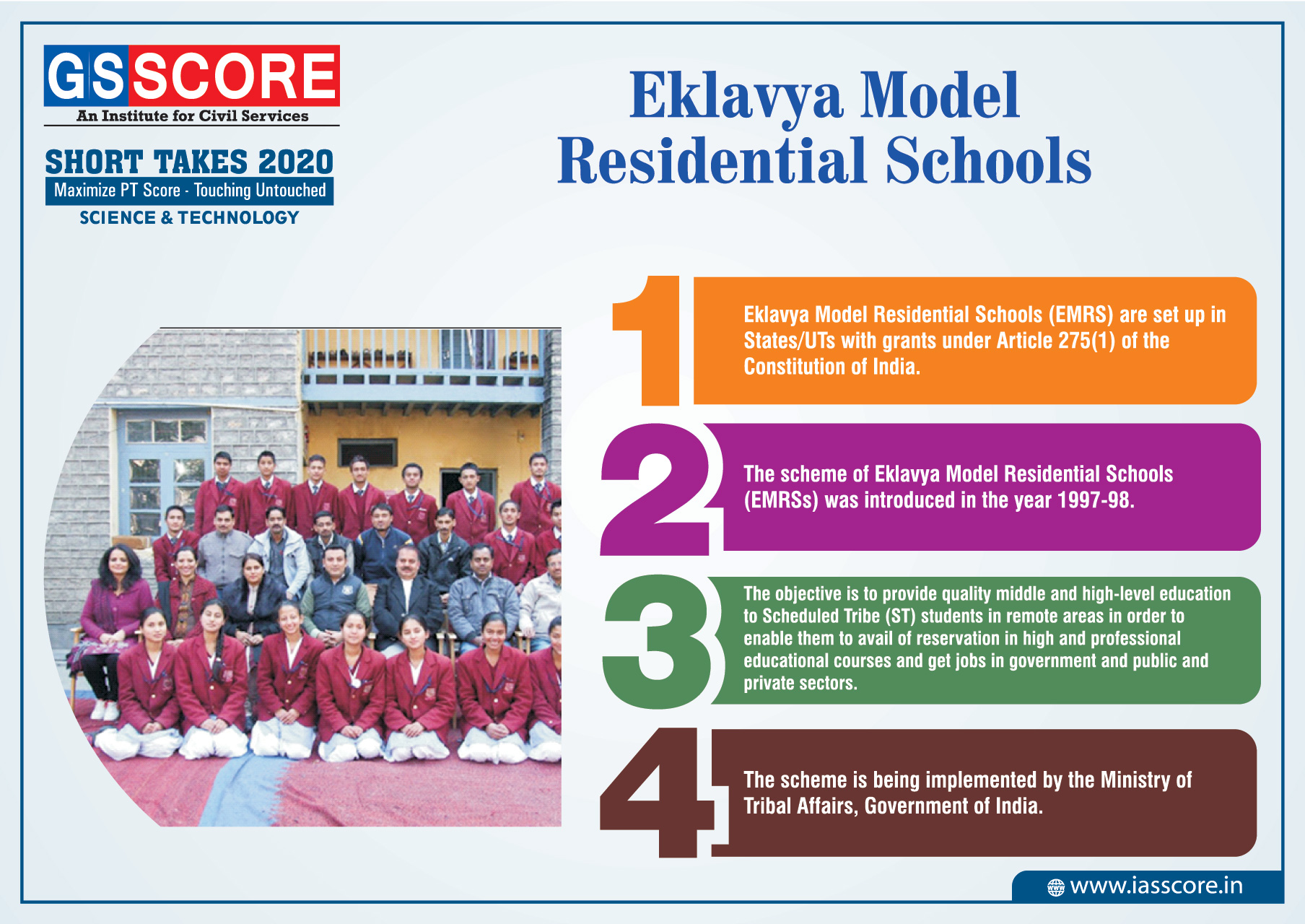Science & Technology: Health Development
Health Development
The government is focused on ensuring affordable healthcare for all Indians as per the sustainable development goal of the United Nations Development Programme (UNDP) and science and technology forms a major tool for ensuring this.
- Ministry of Science & Technology brings interventions to make healthcare accessible and affordable like low cost vaccines for disease prevention, diagnostic kits for detection and medicines for treatment of diseases. In addition to health care interventions, the Ministry also focuses on the health care delivery system with the growing engagement of the private sector, especially start-ups and small industry. The availability of a proper technology translational mechanism ensures this.
India in vaccine development & manufacture
- DBT’s Indo-US Vaccine Action Programme (VAP) & the Vaccine Grand Challenge Programme (VGCP) helped develop the world’s lowest cost rotavirus vaccine. The vaccine developed from Indian strain 116E is efficacious in preventing severe rotavirus diarrhea in low-resource settings in India.
- Introduced in 9 states, namely Odisha, Andhra Pradesh, Haryana, Himachal Pradesh, Assam, Tripura, Tamil Nadu, Madhya Pradesh and Rajasthan, the ROTAVAC® vaccine has received WHO prequalification in 2018 and has been included in India’s Universal Immunization Program (UIP).
- Furthermore, the program is taking major strides towards vaccine for diseases like dengue, enteric diseases, influenza, malaria & tuberculosis (TB). It is estimated that one out of every six children over the world receives vaccines manufactured in India.
- Malaria Vaccine: International Centre for Genetic Engineering and Biotechnology (ICGEB), New Delhi along with its translational research partner “Multi Vaccines Development Program” has made significant progress in the development of vaccines for P. falciparum and P. vivax malaria. Funding support through Vaccine Grand Challenge Program of Department of Biotechnology, Biotechnology Industry Research Assistance Council (BIRAC) and multiple international agencies including Malaria Vaccine Initiative (MVI), PATH and European Vaccine Initiative (EVI) has made this possible. .
- Dengue Vaccine: The International Centre for Genetic Engineering and Biotechnology (ICGEB) in collaboration with drug major Sun Pharma is using the recombinant EDIII-based sub-unit dengue vaccine candidate to develop an injectable vaccine that protects against all four dengue strains that are endemic to India.
Low cost diagnostic kits help timely detection of diseases
1- Day Dengue Diagnostic Kit
- The highly sensitive rapid 1- day dengue diagnostic kit detects Dengue Virus (DENV) infection from the first day of fever, with a cost of Rs 145/test to the distributors. The kit’s performance was tested by Drug Controller Govt. of India and is currently being exported.
Diagnostic kits for Celiac disease
- The Celiac diagnostic kits (Celiac Microlisa & Celiac Card) were developed through collaborative, multi-institutional, inter-disciplinary efforts and are rapid, sensitive, specific, and are much cheaper in comparison to imported kits in use today.
- The participating institutions were ICGEB, New Delhi, Translational Health Science and Technology Institute (THSTI), Gurugram; All India Institute of Medical Sciences (AIIMS), New Delhi, and have been made commercially available by industrial partner.
Plasma Gelsolin Diagnostic Kit for prematurity and sepsis
- CSIR-IMTECH has developed two mass-production ready, plate-based kits to estimate plasma gelsolin levels in humans leading to early detection of pre-term birth.
- After successful clinical trials, the diagnostic kit has been transferred to an industry for commercialization.
eSkIN: An in-silico Platform for Skin Data Analysis
- A sophisticated but user-friendly software tool named “eSkIN” has been developed for skin system which enables modeling, simulations, analysis, and visualization.
- It has the ability to convert large scale high-throughput ‘omics’ data into biomedical knowledge.
- The software is open for use and is available at the online platform of the industry partner, Persistent Systems.
Sohum for early detection of hearing impairment in children
- Sohum is a non- invasive and safe device for screening of neonates for hearing impairment with high sensitivity and specificity.
- This product is licensed to Sohum Innovations and has been launched in India.
- The company is using seed the market strategy by providing products to various hospitals across India for eliciting feedback and adoption.
NeoBreath: Foot-operated newborn resuscitation system
- This product is a foot-operated resuscitation system that can free-up a hand of the device operator or healthcare professional faced with a baby that’s not able to breathe.
- This facility, allows use of both hands for holding the mask, leading to effective sealing and better ventilation.
- NeoBreath is licensed to Windmill Health and has been commercialized in India, as well as top hospitals of South Africa, Nigeria, Kenya and Mali.
- A few sample units have also been shipped to Rwanda, Chile, Peru and Argentina and pilot sales in Africa and South America have started.
- More than 150 units have been sold by the company so far.
- The technology has been sub-licensed to Phoenix Medical systems, Chennai for market outreach and sales.
Brun: Feto-maternal Parameter Monitoring System
- This device is a safe, easy and cost-effective way to continuously monitor feto-maternal vitals of pregnant women, which helps to reduce neonatal mortality.
- The product is licensed to Brun Health.
- The company has completed design for manufacturing of the product and is validating the technology at AIIMS, New Delhi and the product is yet to be commercialized.
Sishunetra
- First-of-a-kind, low-cost wide field eye screening device for premature and term infant has been developed.
- The product has undergone extensive field trials and is ready to be launched in the Indian market by 2018.
Fetal Mom
- This device functions as a fetal electrocardiogram and monitors uterine activity through signal extraction from maternal electrocardiogram, thereby eliminating the need for use of conventional transducers.
- The product has undergone clinical validation and is ready for launch.
Soft Tissue Biopsy device for tissue sample collection with minimum skill for diagnosis
- The device provides a safer, easier and cost-effective way to perform percutaneous aspiration needle biopsy.
- It is easy to use and hence the task can be carried out by a person with limited expertise.
Mobile Lab
- The Mobile Lab is a compact portable clinical laboratory, in the form of a suitcase with a power backup facility.
- It consists of all essential instruments like Biochemistry Analyzer, Centrifuge, Incubator, Data Recorder/Mini Laptop with Patient Data Management Software, Micropipettes and other accessories.
AnuPath: Multi-analyte PoC device
- AnuPath is a point-of-care medical device for management and early prevention of complications for diabetes, chronic kidney disease, anemia and malnutrition.
- The handheld medical device utilizes dry test strips for detection of biomarkers related to the respective disease.
Oral cancer screening camera
- The product is a hand-held imaging device that uses trimodal imaging technology combining tissue fluorescence, absorption, and diffuse reflectance for screening and detection of oral cancers.
Haemoglobin (Hb) Calculator App
- An android-based smartphone app called Haemoglobin (Hb) Calculator was developed for accurate and sensitive measurement of Hb.
- The application’s higher sensitivity, specificity, accuracy and reliability make it an attractive alternative for Hb estimation in resource-limited conditions.
DALI (Dyslexia Assessment in Languages of India): Kit for early detection of dyslexia
- DALI is a package developed by National Brain Research Centre, Manesar that contains screening tools for school teachers and assessment tools for psychologists in Indian languages to identify dyslexia.
- It is the first indigenously developed screening and assessment tool to be standardized and validated across a large population of nearly 4840 children.
- The tools are available in Hindi, Marathi, Kannada and English and are currently being developed in other languages as well.
Medicines and technological solutions bring affordable treatment
Streptokinase
- Streptokinase is a vital, life-saver injectable protein drug that saves up to 40% of human lives after heart attacks, if given within a few hours of the onset of chest pain. CSIR-IMTECH has developed a portfolio of streptokinase technology which includes natural streptokinase; recombinant streptokinase; clot-specific streptokinase (third generation thrombolytic molecules); and the new generation clot-buster(s) (fourth generation thrombolytic molecules).
- The technology of natural streptokinase of ‘British’ Pharmacopoeiac grade developed by CSIR-IMTECH was transferred to Cadila Pharmaceuticals.
Novel processes for Eribulin, Nicotine and Bedaquiline
- Serving as important drugs for health care, bench scale processes have been developed for all three molecules, for which synthesis at a large scale is necessary to serve the market demand. In all three cases, the developed routes are new and cost-effective. Eribulin (an anti-cancer drug) fragments are now made in lesser number of steps, Nicotine is made in one-step and Bedaquiline (anti-Drug Resistant TB drug) synthesis was achieved from commercially available starting materials at a low cost.
Anti-diabetes herbal drug
- CSIR has developed an anti-diabetic herbal formulation from a combination of natural extracts derived from six plant species mentioned in ancient Ayurveda texts. The drug, BGR-34, was approved by the Ministry of Ayurveda, Yoga and Naturopathy, Unani, Siddha and Homoeopathy (AYUSH) after it was tested on patients over a period of 18 months across states of Delhi, Himachal Pradesh, Haryana, Punjab and Karnataka.
Hand-cranked defibrillator
Defibrillation is a treatment for life-threatening cardiac dysrhythmias, specifically ventricular fibrillation (VF) and non-perfusing ventricular tachycardia (VT). A defibrillator delivers a dose of electric current (often called a countershock) to the heart. The world’s first electricity and hand-cranked dual powered defibrillator has been developed, serving in regions without reliable electricity such as in India, Africa, South America and Asia. Health units such as Primary Health Centres (PHCs) and Community Health Centres (CHCs) as well as emergency response units of security forces would benefit from this immensely. The price of this device would be 1/4th of the big brands, while providing similar or higher quality and reliability levels.
‘Dhanush, India’s first indigenous long-range artillery gun’
Context
The Dhanush gun system was showcased for the first time at the 71st Republic Day parade.
About Dhanush:
- Dhanush, the 155 mm/45-calibre gun system is a towed Howitzer designed indigenously by the Ordnance Factory Board (OFB).
- It is the first long-range artillery gun to be produced in India and has been billed as a success of the government’s Make in India
- Hitting range: The gun has a maximum range of 36.5 km and has the capability of automatic alignment and positioning.
- It is equipped with:
- an inertial navigation-based sighting system
- an auto-laying facility
- an onboard ballistic computation
- an advanced day and night direct firing system
- Apart from the above, the gun is also fitted with an inertial navigation system with global positioning system- (GPS) based gun recording and auto-playing, an enhanced tactical computer for onboard ballistic computations, an onboard muzzle velocity recording, an automated gun sighting system equipped with the camera, thermal imaging and laser range finder.
- Joint effort: It is a joint effort by the OFB, the Army, Defence Research and Development Organisation (DRDO), Directorate General Quality Assurance, PSUs Bharat Electronics Limited, SAIL, and private firms.
Desi-Bofors:
- Dhanush is an improved version of the FH-77B 155 mm/39-calibre field howitzers that were originally produced by AB Bofors of Sweden, which is now BAE Systems.
- It is compatible with all North Atlantic Treaty Organization (NATO) 155 mm ammunition system.
- Referred to as 'desi Bofors', Dhanush is the first long-range artillery gun to be produced under the 'Make in India' initiative.
Significance of Dhanush for India:
- Difficult terrain: Dhanush’s lightweight (13 tonnes), makes it easy to mobilize in hilly terrain and remote areas.
- Operational in all climatic conditions: Being a versatile weapon, it can operate in all climatic conditions.
- Enhancing the Army’s power: It is the first long-range artillery gun to be produced in the country. It will significantly enhance the Army's firepower.
Other important display:
- Other than Dhanush artillery, the Anti-Satellite (ASAT) missile also made an appearance for the first time.
- With space becoming a vital dimension of any country's economic and military superiority, A-SAT (Anti-Satellite) weapons play a critical role in providing the necessary strategic deterrence.
- In March last year, the Defence Research Development Organisation (DRDO) launched 'Mission Shakti', India's first A-SAT mission and demonstrated its anti-satellite technology.
- The K9 Vajra, another indigenous gun system inducted in the Indian Army, was also seen at the parade this year.
- The short-span bridging system and the Sarvatra Bridge system was also displayed.
- Heavylift helicopter Chinook and attack helicopter Apache, both recently inducted in the Indian Air Force (IAF), also made a debut in the parade.
- The Chinooks can airlift diverse loads in remote locations.
- The Apache, on the other hand, is a versatile helicopter capable of firing air to air and air to ground missiles, rockets and front gun aided through fire control radar which can unleash havoc on the adversary.
‘Biorock or mineral accretion technology’
Context
The Zoological Survey of India (ZSI), with help from Gujarat’s forest department, is attempting for the first time a process to restore coral reefs using biorock or mineral accretion technology.
Locating the biorock:
- Biorock is the name given to the substance formed by electro accumulation of minerals dissolved in seawater on steel structures that are lowered onto the sea bed and are connected to a power source, in this case solar panels that float on the surface.
- A biorock structure has been installed one nautical mile off the Mithapur coast in the Gulf of Kachchh.
- The location for installing the biorock had been chosen keeping in mind the high tidal amplitude in the Gulf of Kachchh.
- The low tide depth where the biorock has been installed is four metres, and at high tide it is about eight metres.
About the technology:
- Mineral Accretion Technology is a coral reef restoration technology that utilizes low voltage electricity to improve the health and growth rates of corals and other marine organisms.
- The technology works by passing a small amount of electrical current through electrodes in the water.
- When a positively charged anode and negatively charged cathode are placed on the sea floor, with an electric current flowing between them, calcium ions combine with carbonate ions and adhere to the structure (cathode).
- This results in calcium carbonate formation. Coral larvae adhere to the CaCO3 and grow quickly.
- Fragments of broken corals are tied to the biorock structure, where they are able to grow at least four to six times faster than their actual growth as they need not spend their energy in building their own calcium carbonate skeletons.
What are Coral Reefs?
- Coral reefs are the large number underwater strutcures composed of the skeleteon of the colonial marine invertebrates known as ‘coral’.
- Each individual coral animal is called a ‘polyp’. Most of them live in groups of thousands of genetically identified polyps that form a ‘colony’, which is created by a process called budding, where the original polyp grows copies of itself.
- Coral are invertebrates belonging to group of Cnidarians. They are generally classified into two groups:
- Hard or hermatypic corals: They extract calcium carbonate from seawater to create a hard, durable exoskeleton that protects their bodies.
- Soft corals: They are flexible organisms and resembles trees and plants.
Threat to Coral Reefs:
- Ocean warming: Corals cannot survive in high water temperature. Global warming has already led to increased levels of coral bleaching.
- Pollution:Pollution arising from urban and industrial waste, sewage, agrochemicals, and oil pollution are poisoning reefs increases the level of nitrogen in seawater, causing an overgrowth of algae, which smothers reefs by cutting off their sunlight.
- Destructive Fishing Practices: Destructive fishing practices such as cyanide fishing, dynamite fishing, bottom trawling, and muro-ami, bottom-trawling are some greatest threats to cold-water coral reefs.
- Over fishing: Over fishing adversely affects the ecological balance of the coral reef, disturbing the food chain.
- Sedimentation:Furthermore, erosion caused by construction, mining is leading to increased sediment in rivers, which ends up in the ocean. In addition to this, the destruction of mangrove forests, which generally trap large amounts of sediment, is exacerbating the problem.
Significance of the initiative:
- Sustainability: The initiative of coral restoration using biorock technology could potentially help to sustain the earlier successes.
Strengthening corals: The technology helps corals, including the highly sensitive branching corals, to counter the threats posed by global warming.
‘Accretion Burst Event’
Context
In a latest development, astronomers have found that the funnelling of matter into a forming star happens at different rates over time. Sometimes the forming star swallows up a huge amount of matter, resulting in a burst of activities in the massive star. This is called an accretion burst event.
Key-highlights of the findings:
- The international group of scientists, for the first time in history has been able to trace by masers and examine the subluminal propagation of a thermal radiation ‘heatwave’ emanating from an accreting high-mass protostar of the high-mass protostar G358-MM1.
- The object is eight times the mass of the sun; located at a distance of about 22,000 light years from Earth.
- High-mass stars radically rebuild their surroundings and thus redetermine the structure and evolution of galaxies. One of the modern hypotheses is that high-mass protostars grow due to episodic accretion (an increase in mass due to the influx of matter from the surrounding objects).
- Large fragments of the surrounding matter fall on the star, dying in bright flashes.
What is Accretion Burst Event?
- Accretion burst event is incredibly rare. Till now, only three such events have been observed, out of all the billions of massive stars in the Milky Way.
- After the first detection of an accretion burst, in 2016, astronomers from around the world agreedin 2017 to coordinate their efforts to observe more.
- Reported bursts have to be validated and followed up with more observations, and this takes a joint, global effort – which led to the formation of the Maser Monitoring Organisation(M2O).
- In January 2019, astronomers at Ibaraki University in Japan noticed that one such massive protostar, G358-MM1, showed signs of new activity. The masers associated with the object brightened significantly over a short period of time.
- Follow-up observations with the Australian Long Baseline Array revealed something astronomers are witnessing for the first time– a blast of heat-wave coming from the source and travelling through the surroundings of the forming big star.
- Blasts can last for about two weeks to a few months.
What is Maser?
- A maser (microwave amplification by stimulated emission of radiation) is the microwave (radio frequency) equivalent of laser.
- Masers are observed using radio telescopes and most of them are observed at centimetre wavelength. They are very compact.
- A maser flare can be a sign of an extraordinary event such as the formation of a star.
- Since 2017 radio telescopes in Japan, Poland, Italy, China, Russia, Australia, New Zealand and South Africa (HartRAO, in the country's Gauteng province) have been working together to detect a flare stimulated by a burst in the funnelling of materials into a massive star.
Formation of Stars:
- Stars are giant, luminous spheres of plasma. There are billions of them — including our own sun, in the Milky Way Galaxy.
- Stars are born within the clouds of dust and scattered throughout most galaxies. A familiar example of such as a dust cloud is the Orion Nebula.
- Turbulence deep within these clouds gives rise to knots with sufficient mass that the gas and dust can begin to collapse under its own gravitational attraction.
- As the cloud collapses, the material at the center begins to heat up.
- Known as a protostar, it is this hot core at the heart of the collapsing cloud that will one day become a star.
- As the cloud collapses, a dense, hot core forms and begins gathering dust and gas. Not all of this material ends up as part of a star, the remaining dust can become planets, asteroids, or comets or may remain as dust.
Significance of the findings:
- The recent findings will help the astronomers to develop and test theories to explain how high-mass stars gain their mass.
- Furthermore, these findings promote the advantages of maser observations in understanding high-mass-star formation.
Govt. invoke Epidemic Diseases Act, 1897
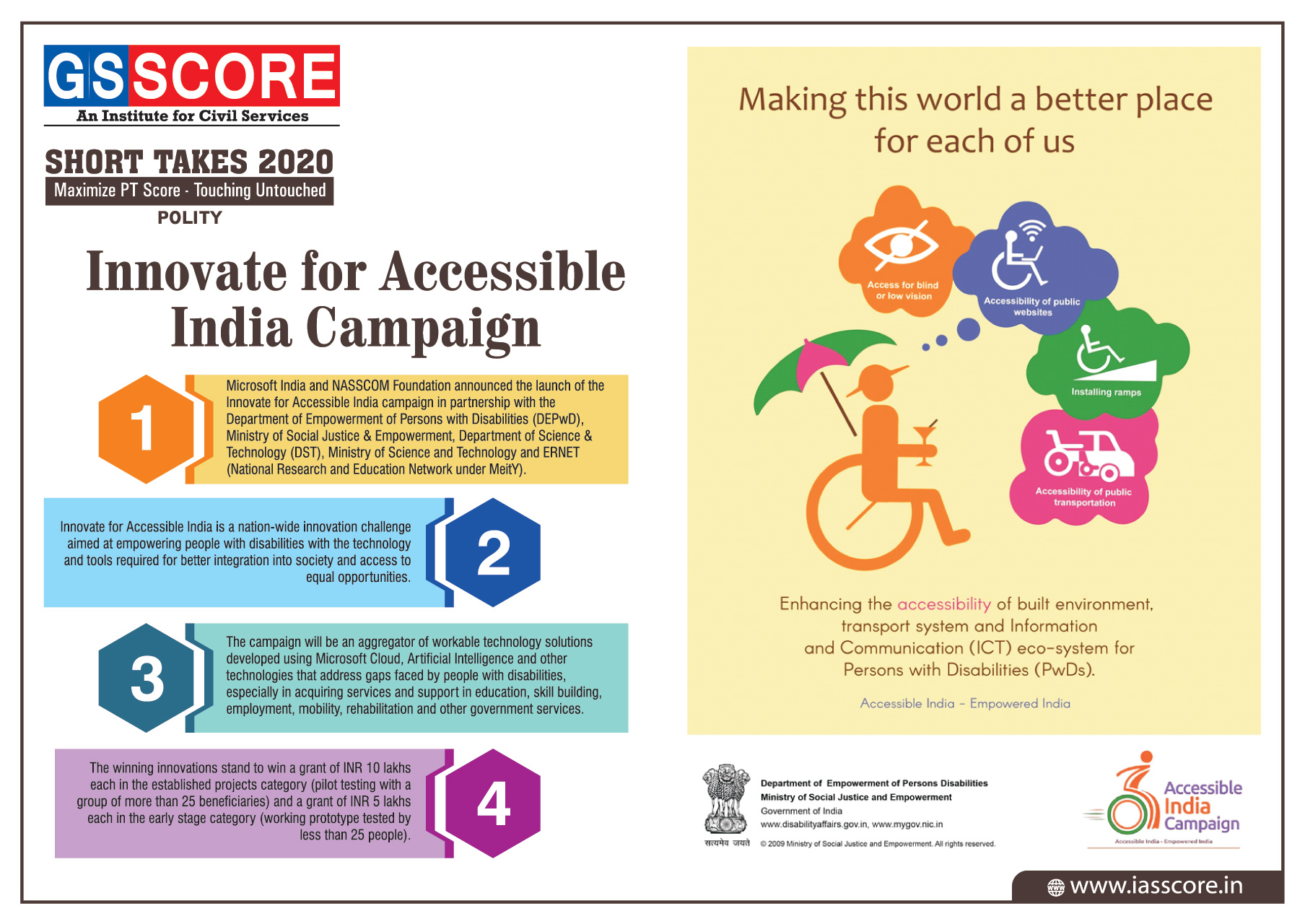
Innovate for Accessible India campaign
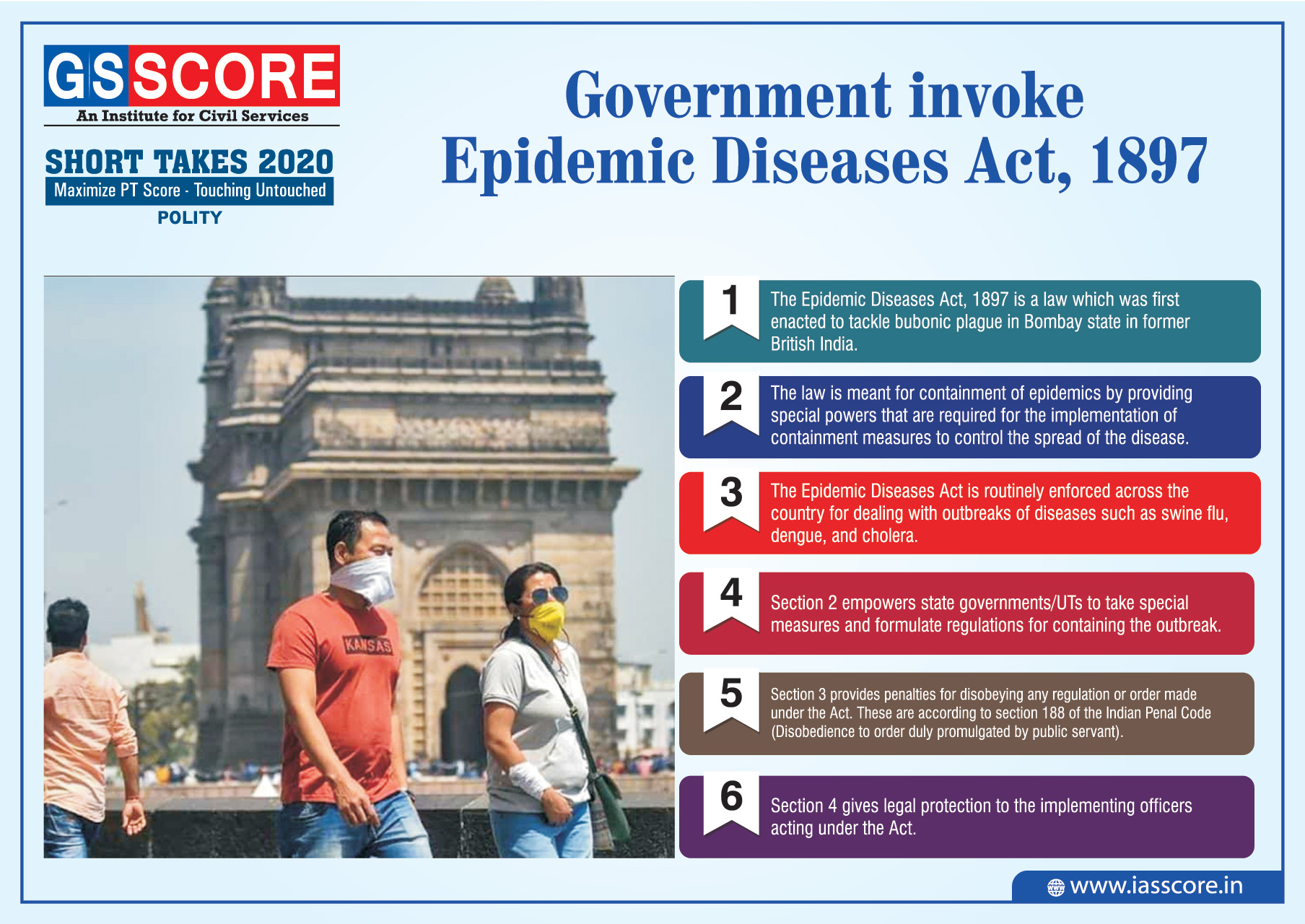
Swachh Bharat Mission Phase II
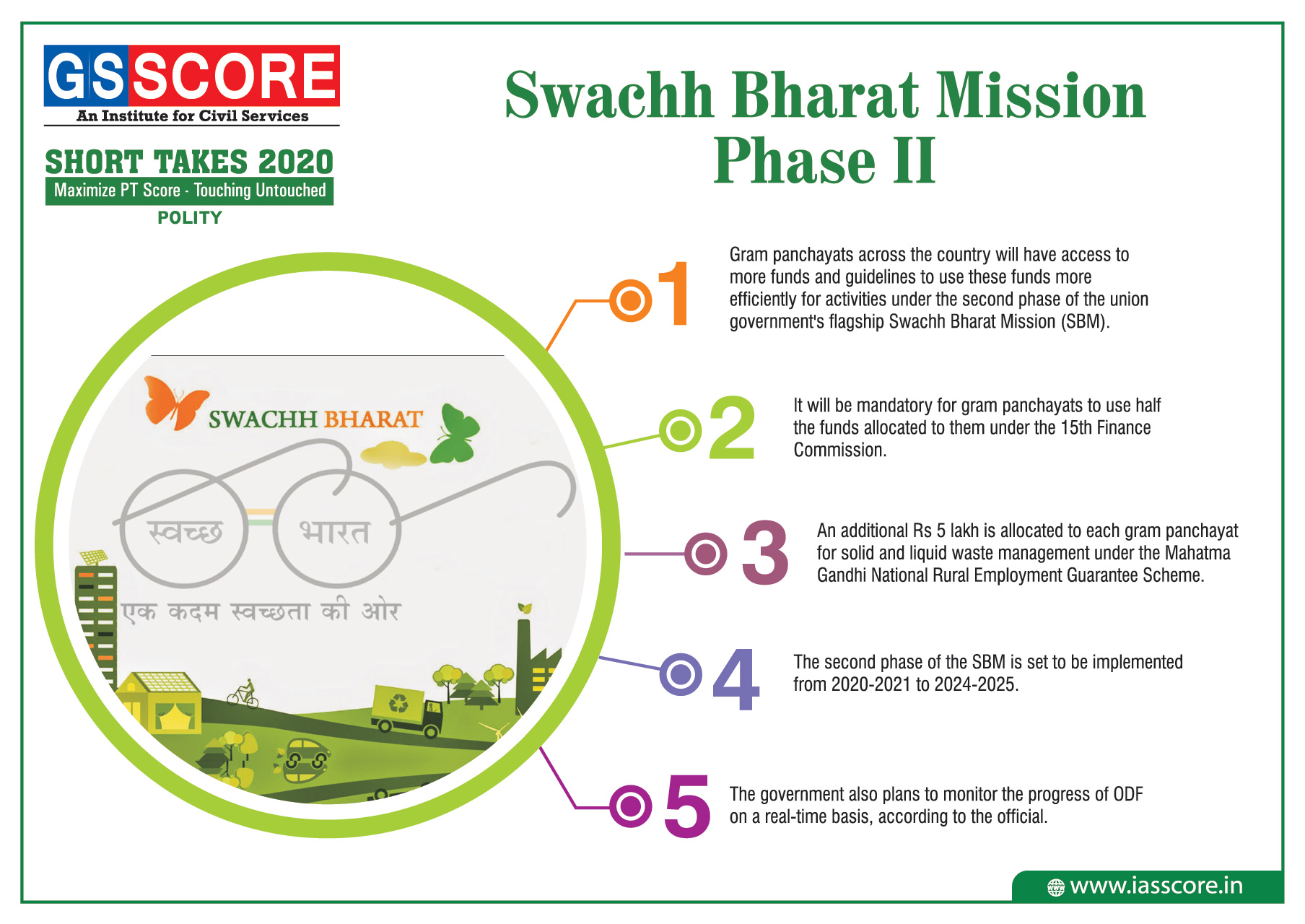
RashtriyaVayoshriYojana
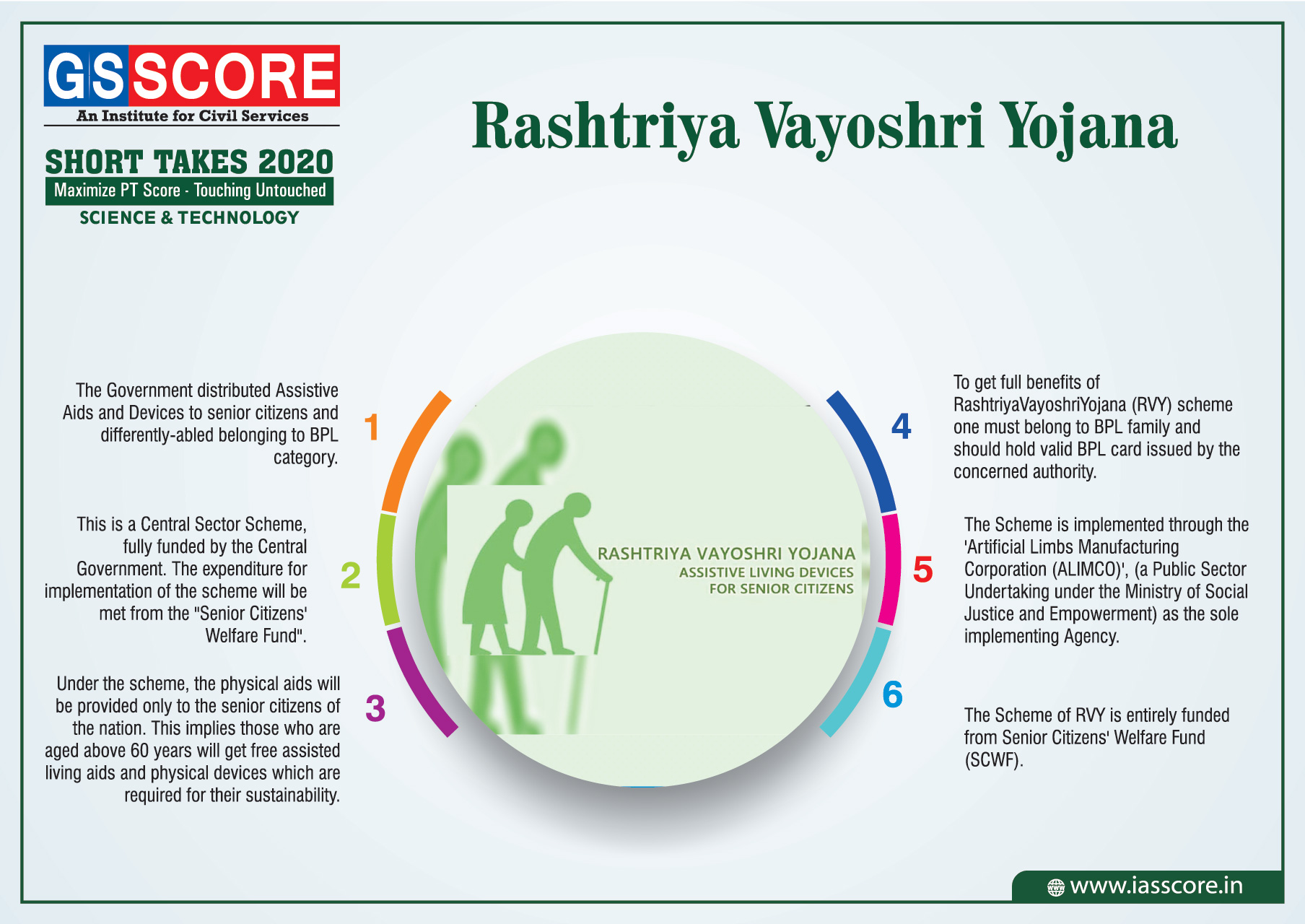
Eklavya Model Residential Schools
